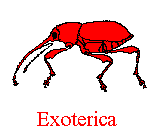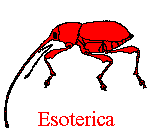1. I find Harvey’s argument for a question mark at the end of the poem compelling and do not understand why subsequent editors have not followed him. I’m tempted to quote his entire long paragraph (9), but these bits should suffice:
“A question-mark at the end of 14 looks to be correct, since this punctuation alone makes 8-14 meaningful. The full stop unanimously adopted by edd. causes chaos, reducing the second half of the poem to lameness and extreme obscurity. . . . 12-14 as a statement is unintelligible. It suggests that money turns a bad poet into a good one, while credas (14), ‘you would suppose’, is not merely otiose but positively intrusive.”
2. Kißel (98) comments on “die Kühnheit der Junktur cantare nectar“, and Harvey also calls it “bold and incongruous”. Others use harsher words: “cantare . . . nectar pro: ‘cantare carmen nectareum vel suave’ nemo dixit praeter P., neque exempla allata . . . usum insolitum defendunt” (van Wageningen), “insolenter dictum nouitatis cupiditate” (Bo). So far as I have seen, no one has noted that cantare and nectar are very nearly anagrammatic, and share an entire syllable: CaN-TAR-E ~ NEC-TAR. That seems an effective way of combining things that are closely related and at the same time very different. Was such jingling word-play typical of the contemporary bad poets that are his target? Is Persius providing an illustration of “the smooth mellifluous stuff so dear to the popular taste of [his] day” (Lee-Barr) in the very description of it? Such wordplay also seems Lucretian, which arguably provides a nice lead-in to 1.1. Or are the sounds supposed to be crowlike or magpielike? Except for the Ns, cantare . . . nectar sounds rather corvine to me.
3. Since Persius is at least as willing as other Roman satirists to wade into the filthy side of life, I wonder: if nectar here means ‘honey’ (and it does), and honey is a golden liquid excreted by animals,(1) might Pegaseium nectar imply a less pleasant golden liquid excreted from the other end of a much larger animal? In short, is there some hint that the bad poets’ works are no better than horse-piss? If that seems harsh, I will gladly grant that mythological-flying-horse-piss is a better class of piss than ordinary barnyard horse-piss.(2) I should say that I do not think this can be the primary meaning: if it were, it might make Harvey’s question mark unnecessary. Rather, I agree with Gildersleeve: “Nectar . . . combined with Pegaseium is sufficiently grandiloquent to be as absurd as it is intended to be.” A whiff of the barnyard would help make the grandiloquence even more absurd.
(1) I have not done a thorough investigation of what the ancients knew about how honey is made, but Persius’ contemporary the Elder Pliny knew that honey is bee vomit: ore enim eum vomunt (NH 11.12.31).
(2) Other poets (not Persius) are already drinking from a horse-pond in line 1, which is nasty enough. It is not surprising that some scribes misread prolui as pollui there.


